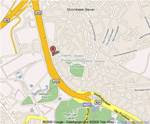Everyone who has a job in marketing regularly gives presentations or prepares presentations for others. If you are a media spokesperson for your company, you will have regular conversations with critical journalists. Whether your objective is to sell a product, share information or change a perception, in some way you are trying to persuade your audience.
Yesterday whilst driving I was listening to a great podcast on “How to be persuasive in a presentation” (part 2). Generally there are three aspects to being persuasive. Firstly your relationship with your audience is of importance. The better the relationship, the more likely people are to believe you. Secondly, there is your level of expertise as perceived by your audience. So no matter how knowledgeable you are in a certain area, it’s your audience’s perception of your expertise that adds to your credibility. And thirdly persuasion is being influenced if there is a hierarchical relationship between you and your audience. This kind of role power usually applies to working life. When your boss asks you to do something you will usually do it, even though you might not have a good relationship with him or her and do not see him or her as an expert.
Now I won’t go into all of the details, it’s probably better to listen to the podcast. But to go short, role power can be very effective, but might not be motivating and only applies to specific situations. When dealing with an audience outside of your company, it mostly is non-existent. That leaves us with relationship power and expertise power, which can be mapped out into a matrix.
If you are a PR professional or media spokesperson, you should be aware of one of the first questions you should ask yourself when dealing with the press: Am I the right person to talk to this journalist and do I have enough expertise on the subject matter? On the other hand, the journalists objective is to get useful information on a particular subject. If he or she would feel that the person they are going to talk to cannot offer that information due to a lack of expertise, they would most probably not invest time in it. So when both parties are well prepared on what the subject matter of their conversation is, the interviewee should have a good level of expertise and the journalist would not doubt the interviewee’s expertise beforehand. In other words: if you work with the matrix, this interview would score in Quadrant 2 or Quadrant 4.
Let’s go a bit deeper into the difference between these quadrants, i.e. high expertise/low relationship and high expertise/high relationship. The latter is obviously the quadrant where everyone likes to be, but it just isn’t always the case. However if you are in Quadrant 2, the biggest pitfall is to loose sight of maintaining the relationship. Don’t underestimate, get over confident and do prepare well.
A lot of times an interview should be placed in quadrant 4. As indicated the journalist will assume that your company has put forward their best spokesperson with a good level of expertise. But you might not have talked to this journalist before. The journalist might be new with the publication, or might be a freelancer who works for a mixture of publications. So there is virtually no relation yet, although there might be a relation between your PR agency and the journalist. Try not to wow the journalist with your expertise all the time. Sure, he or she is interested to hear your expert opinion. But it’s important to ask questions and input so that the conversation stays on-topic. In addition this is an opportunity to find out how a journalist views your company and the market. But don’t overdo it and make it an exam. Journalists cover various topics and don’t have huge amounts of time for preparation ;-)
Richard
7.2.08
Why PR is all about relations
Subscribe to:
Post Comments (Atom)

No comments:
Post a Comment